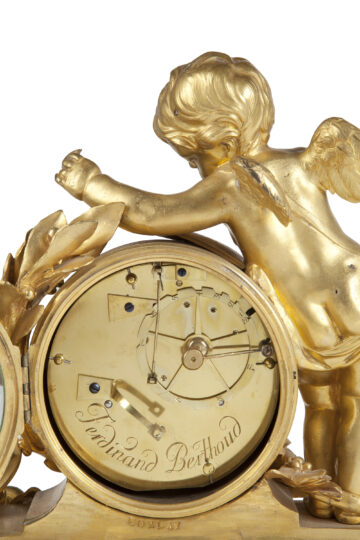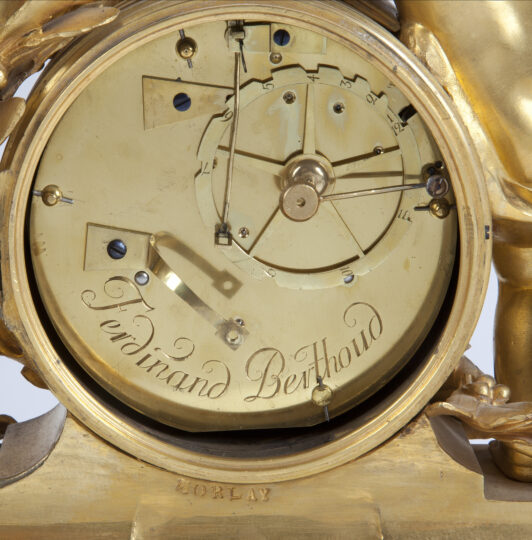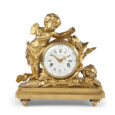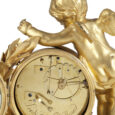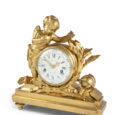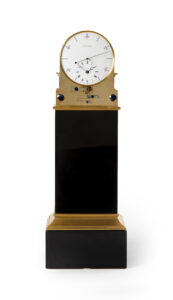MANTEL CLOCK L. XVI Ferdinand Berthoud Ca. 1785 France
M&R72
MANTEL CLOCK L. XVI
Signed: Ferdinand Berthoud
Circa 1785
France
Movement
The eight-day spring-driven movement is constructed between circular plates, has anchor escapement and a silk-suspended pendulum, as well as bell striking, regulated by an external countwheel. It strikes the hours fully and the half hours with a single stroke. The countwheel is numbered to indicate the position of the striking train. The maker has signed the movement on the backplate: Ferdinand Berthoud.
Dial
The convex enamel dial has Roman hour numerals, Arabic five-minute and minute divisions. The clock is signed in black by the maker above and below the middle of the dial: Ferdinand Berthoud. The time is indicated by a fine pair of symmetrically pierced gilt-brass hands. The dial is protected by a convex glass set in a moulded gilt-brass bezel.
Case
The gilt cast-brass case depicts a winged putto reading a letter, leaning on the movement housing. On the opposite side is a laurel vine with berries, which originates from a bow under the dial. There are also books and a globe on this side. The case is stamped by the case maker under the bezel on the back of the clock: MORLAY. The whole is situated on a rectangular base which rests on four toupie feet.
Duration 1 week
Height 32.5 cm
Width 30.5 cm
Depth 12 cm.
Literature
– Tardy, Dictionnaire des Horlogers Français, Paris, 1971, pp. 49-53, 477
– H.M. Vehmeyer, Antieke Uurwerken, Houten, 1994, p. 598.
The maker
Ferdinand Berthoud was born in Plancemont in the vicinity of Neuchâtel (Switzerland) in 1727. He came to Paris in 1745 and initially worked for Julien Le Roy. He became a master clockmaker in 1754. He was first married to Ms Chatri from Caen in Normandy in 1764, later in 1782 to Ms de Moustier from Saint-Quentin; he had no children. From 1786 he was Horloger du Roi and Inspecteur Général des Machines pour la Marine. He was one of the great French makers of longcase and table regulators, as well as marine chronometers. His first chronometer dates from 1754; it is estimated that he produced a total of 70 marine chronometers. He died in Groslay in France in 1807.
The bronze caster
René François Morlay was a bronze caster and chaser, recorded as active in Paris around 1779.


